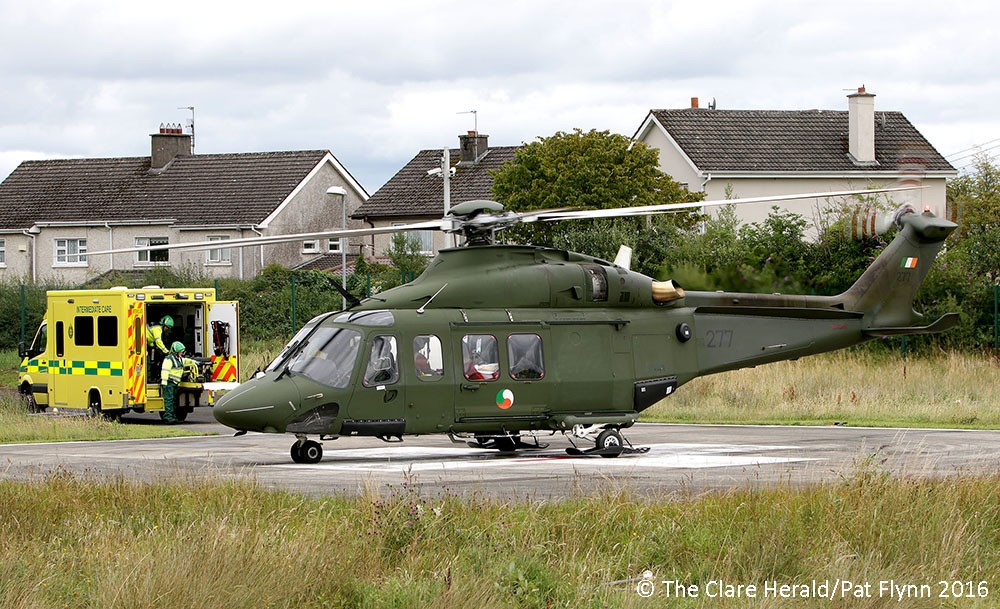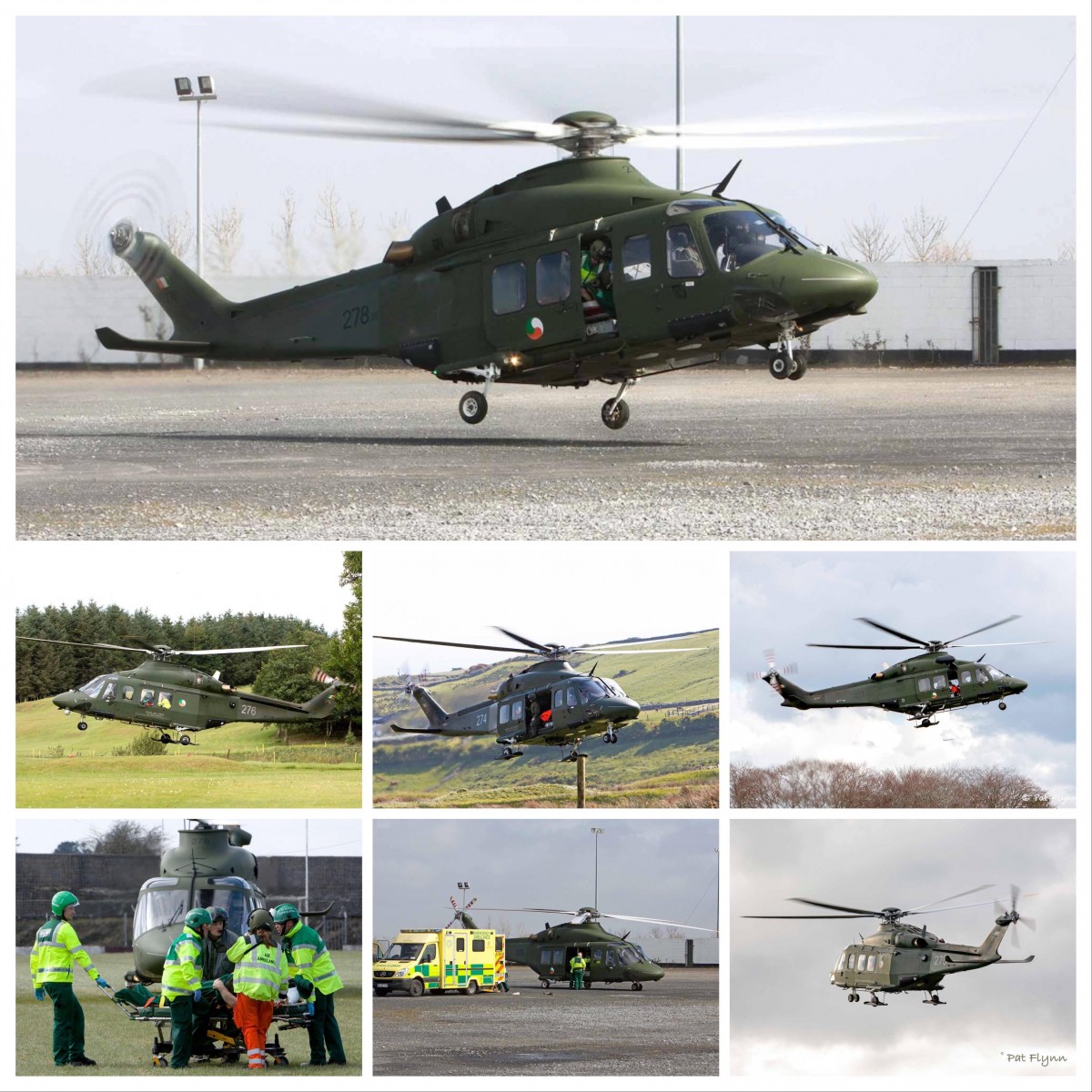
Irelands first Emergency Aeromedical Service (EAS) air ambulance has airlifted its 3000th patient.
On 4th June 2012, the Department of Health and the HSE’s National Ambulance Service (NAS) launched the Emergency Aeromedical Service (EAS), which is in Custume Barracks, Athlone, Co. Westmeath.
The service, a joint project between the Department of Health, the HSE and the Defence Forces, means that National Ambulance Service advanced paramedics now have the assistance of a dedicated military helicopter for the rapid transfer of critical patients to the most appropriate hospital.
Initially set up in 2012 for a 12-month trial period, the aim was to assess the level and type of dedicated Helicopter Emergency Medical Service (HEMS) required in Ireland in light of recent closures of regional facilities such as Roscommon Hospital. Since its inception, it has become a vital asset in terms of critical pre-hospital care and has recently airlifted its 3000th patient.
An EAS helicopter crew consists of both Defence Forces personnel and a NAS advanced paramedic, remaining on immediate call to the National Aeromedical Co-Ordination Centre (NACC) seven days a week, 365 days a year.

Known by its callsign “Aircorps-112” reflecting its military and medical nature, #112 highlights the standard European emergency contact number.
The EAS has responded to multiple medical and trauma calls in Co Clare since first launched.
“AirCorps112” is an AW139 twin‐engine, multi‐role helicopter, flown with a crew of two pilots and a crewman. When configured for Emergency Aeromedical Service, it can accommodate an array of medical equipment, including oxygen, suction and defibrillator, several attending medics and a patient.
The AW139 is the fastest helicopter in its class, capable of travelling at 315 kilometres per hour, allowing “AirCorps112” to reach anywhere in the country, and deliver patients to an appropriate hospital in minutes.
In addition to the EAS, the Defence Forces have provided an inter‐hospital air ambulance service to the State since the 1960s, which has carried out thousands of missions, utilising both its fixed wing and rotary wing aircraft which operate from Casement Aerodrome, Baldonnel.

